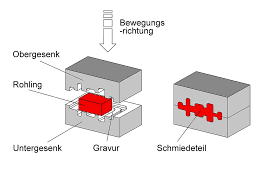HISTORY OF DIE-CASTING
The
earliest examples of die casting by pressure injection - as opposed to
casting by gravity pressure - occurred in the mid-1800s. A patent was awarded
to Sturges in 1849 for the first manually operated machine for casting printing
type.
The process was limited to printer's type for the next 20 years, but development of other shapes began to increase toward the end of the century. By 1892, commercial applications included parts for phonographs and cash registers, and mass production of many types of parts began in the early 1900s.
The first die casting alloys were various compositions of tin and lead, but their use declined with the introduction of zinc and aluminum alloys in 1914. Magnesium and copper alloys quickly followed, and by the 1930s, many of the modern alloys still in use today became available.
The History die casting process has evolved from the original low-pressure injection method to techniques including high-pressure casting - at forces exceeding 4500 pounds per square inch - squeeze casting and semi-solid die casting. These modern processes are capable of producing high integrity, near net-shape castings with excellent surface finishes.
The Future refinements continue in both the alloys used in die casting and the process itself, expanding die casting applications into almost every known market. Once limited to simple lead type, today's die casters can produce castings in a variety of sizes, shapes and wall thicknesses that are strong, durable and dimensionally precise.
The process was limited to printer's type for the next 20 years, but development of other shapes began to increase toward the end of the century. By 1892, commercial applications included parts for phonographs and cash registers, and mass production of many types of parts began in the early 1900s.
The first die casting alloys were various compositions of tin and lead, but their use declined with the introduction of zinc and aluminum alloys in 1914. Magnesium and copper alloys quickly followed, and by the 1930s, many of the modern alloys still in use today became available.
The History die casting process has evolved from the original low-pressure injection method to techniques including high-pressure casting - at forces exceeding 4500 pounds per square inch - squeeze casting and semi-solid die casting. These modern processes are capable of producing high integrity, near net-shape castings with excellent surface finishes.
The Future refinements continue in both the alloys used in die casting and the process itself, expanding die casting applications into almost every known market. Once limited to simple lead type, today's die casters can produce castings in a variety of sizes, shapes and wall thicknesses that are strong, durable and dimensionally precise.













